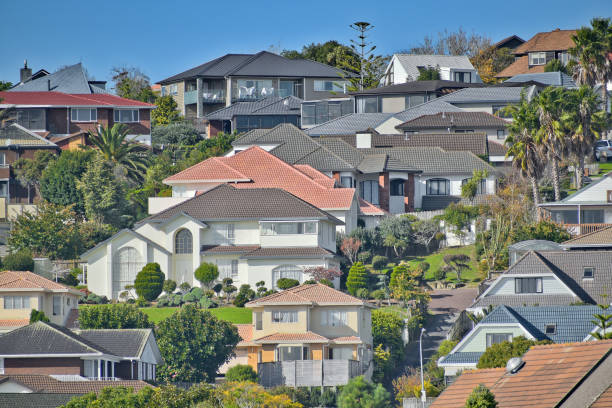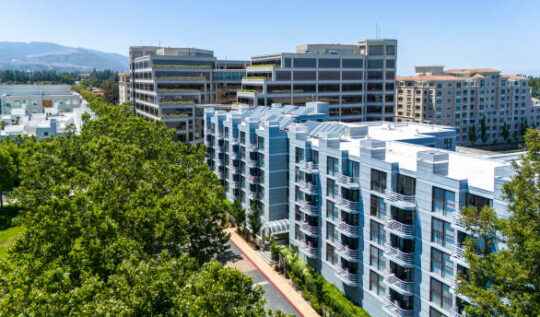What Does R1-1-HCR Zoning Mean in Los Angeles? A Highland Park Case Study
Zoning in Los Angeles is rarely simple. One of the most common surprises homeowners face is discovering that the official zoning of their property doesn’t match how the home has always been used. This exact issue comes up often in historic neighborhoods like Highland Park, where older duplexes and multifamily properties sometimes sit on land zoned for single-family use.
Recently, a homeowner in Highland Park raised this very question: their property, built as a duplex in the 1960s, shows up on the city’s ZIMAS system as R1-1-HCR. Yet the house has always functioned as two units. Understandably, this raised confusion about what the zoning designation means, whether the duplex is legal, and if adding an ADU (Accessory Dwelling Unit) would even be possible.
This situation highlights some of the quirks of Los Angeles zoning. Let’s break down what R1-1-HCR really means, why the duplex is likely considered a “legal nonconforming use,” and how homeowners can still pursue ADU projects despite the restrictions.
Breaking Down the Zoning Code: R1-1-HCR
The zoning designation R1-1-HCR can be split into three parts:
-
R1 (Single-Family Residential): This base zone is intended for one single-family dwelling per lot. In modern zoning, duplexes are not permitted in R1.
-
-1 (Height District 1): This usually sets limits on floor area ratio (FAR), lot coverage, and height. In most cases, it’s fairly standard and not a major obstacle.
-
-HCR (Hillside Construction Regulation Overlay): This adds a layer of rules for properties located in hillside areas. It can affect grading, retaining walls, driveway slope, and structural design.
In plain language: R1-1-HCR zoning means your lot is supposed to be for one house, with added restrictions because it’s in a hillside area.

How Can a Duplex Exist on R1 Land?
This is where Los Angeles’ zoning history comes into play. Many neighborhoods were built out long before the current zoning code was updated. If a property was constructed legally under the zoning laws at the time, but later zoning changes no longer allow it, the use is considered legal nonconforming.
In this Highland Park example, the duplex was built in the 1960s when zoning rules may have allowed two units. Later, the city rezoned the parcel to R1, but the duplex was already there. Because it complied with the law when built, it remains legal today.
This is sometimes called being “grandfathered in.” The city won’t make you tear it down just because zoning changed. However, it does limit your ability to expand or add more units without navigating the code carefully.
The “½” Address Confusion
The rear unit in this duplex reportedly has a “½” address (e.g., 123 Main Street ½). That’s actually very common in Los Angeles. It typically indicates a secondary unit built on the same parcel that wasn’t subdivided into its own lot.
The important point: the “½” address doesn’t automatically affect zoning or legal status. It’s simply a numbering convention used by the city. The true test of legality comes from the permit history, not the address label.
Can You Still Add an ADU?
Here’s the good news: California state law strongly supports homeowners who want to build ADUs, even when local zoning codes are restrictive.
-
State Laws (SB 13, AB 68, SB 9): These laws require cities like Los Angeles to allow ADUs on most residential lots, including single-family parcels. Local zoning cannot override these state protections.
-
Impact on R1 Lots: Even though your property is zoned R1, you can typically still add at least one ADU (attached or detached), and sometimes a junior ADU (JADU) as well.
-
Special Consideration: Since your lot already has two units, LADBS (Los Angeles Department of Building and Safety) may first want to confirm the duplex’s legal nonconforming status before approving a new unit.
In short: yes, you can likely build an ADU, but you’ll need to confirm the property’s documentation first.
The Role of Hillside Construction Regulation (HCR)
The HCR overlay adds complexity to any construction project. Even if zoning and state law allow your ADU, you may face additional requirements such as:
-
Grading and slope rules (driveway slope limits, hillside grading regulations)
-
Retaining wall restrictions (limits on height, engineering requirements)
-
Structural demands (enhanced foundations, seismic standards)
-
Design review (to ensure hillside safety and compatibility with surroundings)
This doesn’t mean an ADU is impossible, but it does mean additional cost and time for engineering studies, surveys, and plan review.
Next Steps for Homeowners
If you’re in the same situation—owning a duplex on R1-1-HCR land—here’s a practical checklist:
-
Pull your permit history from LADBS
-
Confirm the duplex was built legally.
-
Verify whether there are existing certificates of occupancy.
-
-
Check the ZIMAS report for overlays or entitlements
-
Look for additional restrictions like Historic Preservation Overlays (HPOZ) that may apply.
-
-
Consult LADBS or City Planning
-
Ask about the property’s legal use status.
-
Clarify whether it qualifies as a legal nonconforming duplex.
-
-
Engage an ADU consultant or zoning expert
-
A professional can help prepare plans, handle permitting, and navigate hillside requirements.
-
-
Budget for hillside design requirements
-
Structural engineering, grading studies, and retaining wall plans may be necessary.
-
Why Zoning Expertise Matters in Highland Park
Highland Park is one of the hottest real estate markets in Los Angeles. Many properties have zoning quirks, nonconforming units, or unusual overlays. While this can create challenges, it also creates opportunity.
-
For homeowners: Understanding your zoning can unlock ADU potential and increase property value.
-
For landlords: Verifying legal nonconforming status can protect rental income and avoid enforcement issues.
-
For investors: Properties with existing duplexes on single-family zoning are highly valuable in today’s housing market, as they can generate more rental income than their zoning technically allows.
At JDJ Consulting Group, we often help clients in situations like this—where zoning codes and property history don’t align neatly. By analyzing permits, zoning overlays, and state housing laws, we create a roadmap that balances compliance with opportunity.
Conclusion: R1-1-HCR Zoning Mean in Los Angeles
R1-1-HCR zoning in Los Angeles is designed for single-family homes in hillside areas, but many properties in Highland Park and similar neighborhoods don’t fit the mold. If you own a duplex on such land, chances are it’s a legal nonconforming use—grandfathered in despite today’s restrictions.
The good news: California’s ADU laws open the door to new construction, even on single-family lots. The challenge lies in navigating hillside regulations and verifying legal status. With the right guidance, homeowners can successfully expand, convert garages, or add ADUs while staying compliant.
In Los Angeles, zoning is never just a technical detail—it’s the key to unlocking your property’s full potential.





